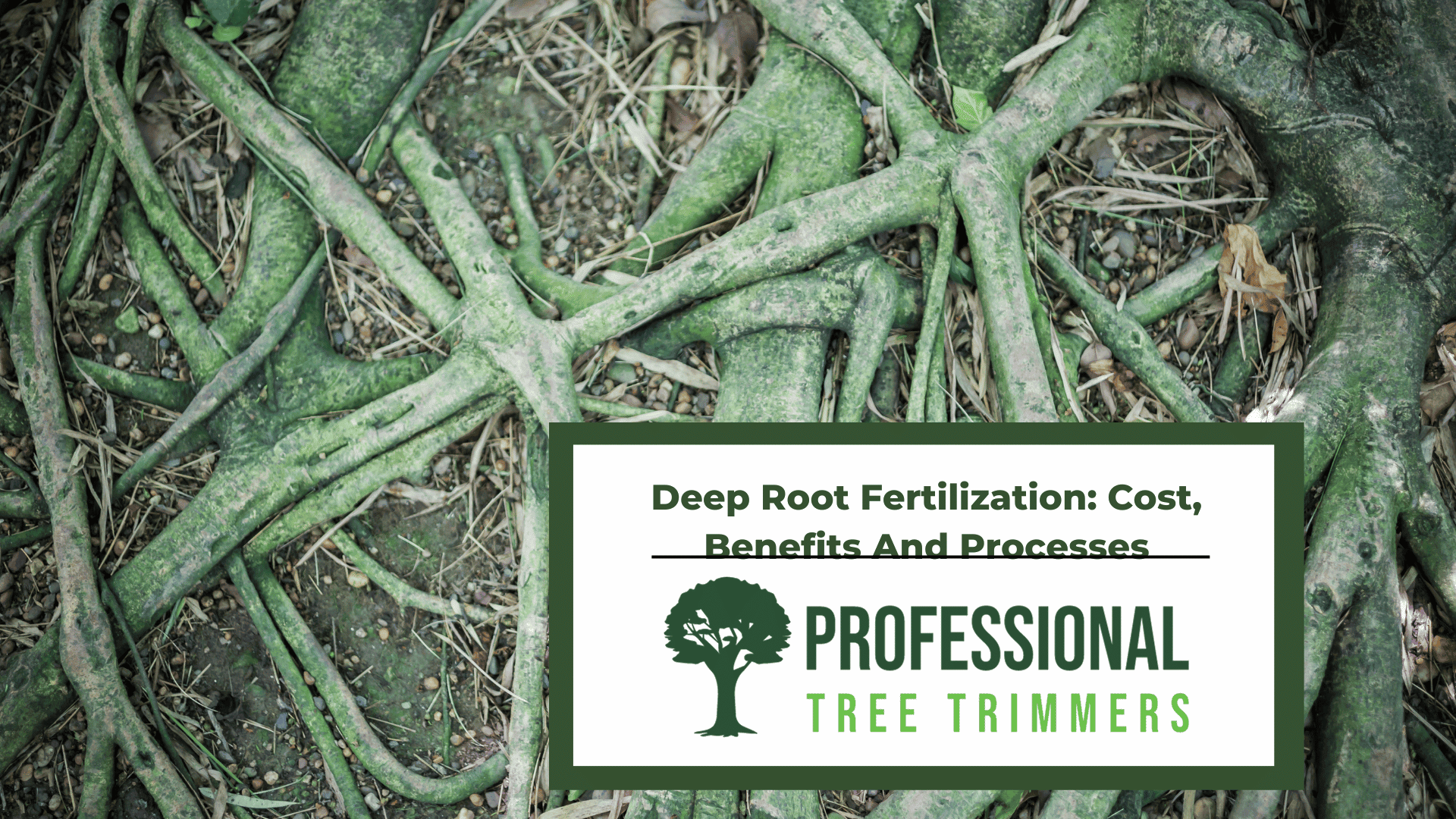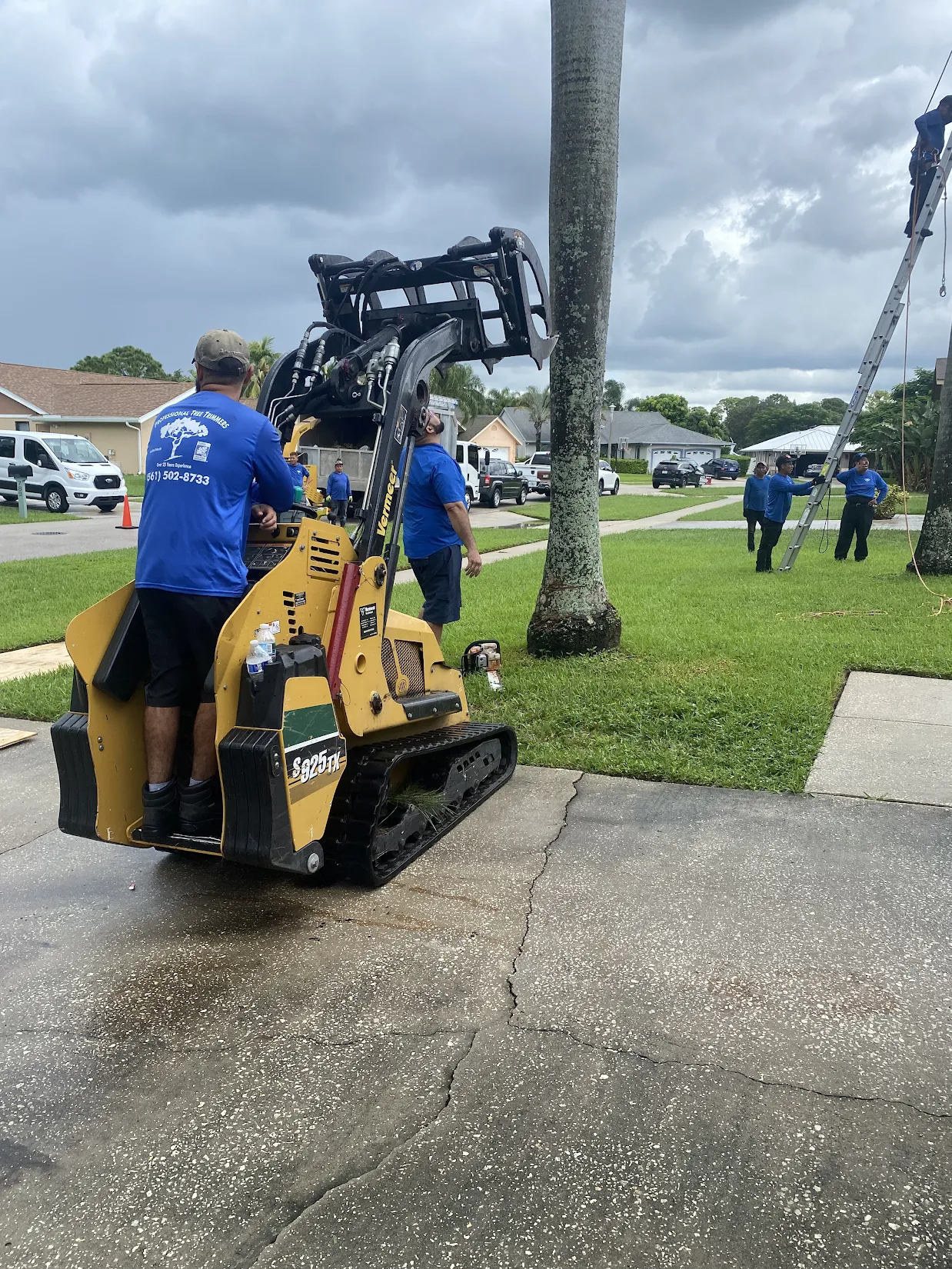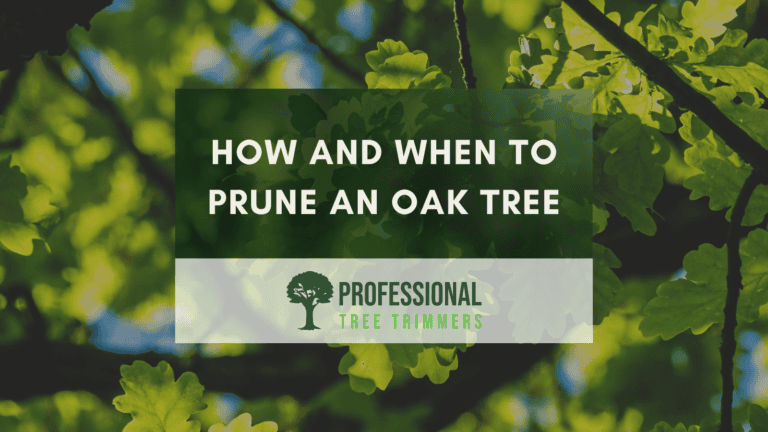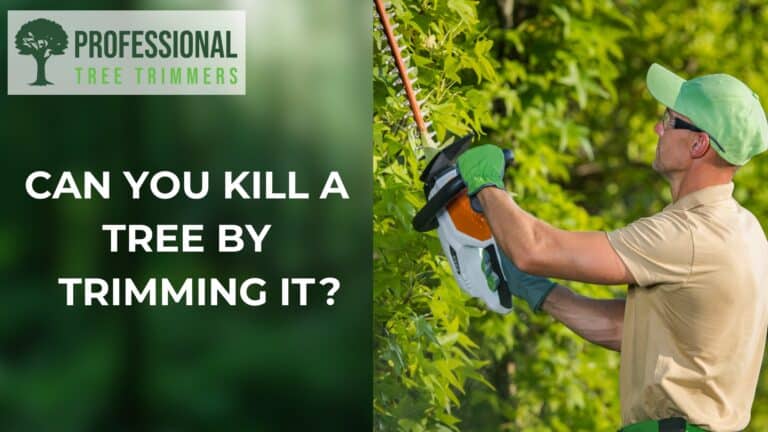One effective technique that arborists and tree care professionals use is deep root fertilization. This method involves delivering essential nutrients directly to the root zone of trees, ensuring they receive the nourishment they need for optimal growth and vitality.
Deep root fertilization goes beyond surface-level treatments by targeting the roots, which act as the lifeline for trees. By injecting nutrients directly into the root system, this approach maximizes the absorption and utilization of vital elements, such as nitrogen, phosphorus, and potassium. It’s like providing a customized meal plan tailored specifically for your trees.
In this article, we’ll delve deeper into the benefits of deep root fertilization, explore its costs, and outline the step-by-step process involved.
What is deep root fertilization for trees?
Deep root fertilization for trees is a technique that is designed to deliver essential nutrients directly into the root zone of trees. Unlike surface fertilization methods, which involve spreading fertilizers on the ground around the tree, deep root fertilization involves injecting the nutrients directly into the soil around the roots.
This method recognizes that the roots are the primary organ responsible for nutrient absorption and water uptake in trees. Through the delivery of the nutrients directly to the root zone, deep root fertilization ensures that they are readily available for uptake by the roots, leading to optimal tree growth and development.
The importance of delivering nutrients directly to the roots cannot be overstated. In many urban environments or areas with compacted soil, the soil conditions may not be ideal for trees to access the necessary nutrients naturally. Also, factors like construction activities, nutrient leaching, or competition from other plants can further limit nutrient availability to the trees.
Deep root fertilization solves these challenges by bypassing the limitations of the soil and getting the nutrients right into where they are needed most. That way, the nutrients can reach the fine feeder roots that are responsible for nutrient uptake. This, in turn, enhances the tree’s stability, improves its ability to absorb water and nutrients, and increases its overall resilience to environmental stressors.
Is deep root fertilization necessary?
Yes, deep root fertilization can be necessary under certain circumstances. Some of the primary indicators for deep root fertilization are:
- The presence of nutrient deficiencies in trees. Symptoms of nutrient deficiencies may include yellowing or discoloration of leaves, stunted growth, reduced foliage density, or early leaf drop. These signs indicate that the tree is not receiving an adequate supply of essential nutrients, which can hinder its growth and overall health.
- Poor soil conditions that make it difficult for tree roots to access the necessary resources.
- Signs of tree stress, such as leaf wilting, canopy thinning, or insect and disease infestations, may indicate the need for deep root fertilization.
Hiring an arborist or tree care professional to come and analyze soil conditions and identify any nutrient deficiencies is crucial in determining if deep root fertilization is necessary for your trees.
How much does deep root fertilization cost?
On average, the cost of deep root fertilization for a single tree can range from $100 to $500. Larger trees or those requiring specialized equipment may fall on the higher end of the price range. If multiple trees are being treated, some service providers may offer package deals or discounted rates.
It’s worth mentioning that additional factors can influence the overall cost. For instance, if the soil conditions are particularly poor or require remediation, additional costs may be incurred to improve the soil’s health before the fertilization process. Similarly, if a tree assessment or diagnosis is needed to identify specific nutrient deficiencies or tree health issues, there may be an additional fee for that service.
You should consult with a tree care specialist in your area to get an accurate estimate for deep root fertilization. They will assess your tree’s specific situation, consider the factors mentioned above, and provide a more precise cost estimate based on your unique requirements.
What are the benefits of investing in deep root fertilization?
Investing in deep root fertilization for trees offers numerous benefits that contribute to their overall health and vitality. Some of the key advantages include:
1. Improved Nutrient Uptake
Deep root fertilization ensures that essential nutrients, such as nitrogen, phosphorus, and potassium, are delivered directly to the root zone where they are readily absorbed by the tree roots. This optimized nutrient uptake promotes healthy growth and development.
2. Enhanced Root Development
Deep root fertilization stimulates root growth and encourages the expansion of the root system. With a healthier and more extensive root network, trees can better anchor themselves in the soil, access water and nutrients more effectively, and withstand environmental challenges.
3. Increased Resistance to Diseases and Pests
Well-nourished trees are better equipped to defend against diseases and pests. Deep root fertilization strengthens the tree’s immune system, making it more resistant to common pests and diseases that can compromise its health.
4. Enhanced Tree Vigor
Deep root fertilization promotes overall tree vigor, resulting in lusher foliage, improved canopy density, and better overall appearance. Vigorous trees are more aesthetically pleasing and contribute to a healthier and more vibrant landscape.
5. Improved Stress Tolerance
Trees that have undergone deep root fertilization are better equipped to handle environmental stressors. The increased nutrient availability and robust root system help trees withstand periods of drought, extreme temperatures, or other adverse conditions.
6. Long-Term Cost Savings
Investing in deep root fertilization can lead to long-term cost savings. Healthy and well-maintained trees are less susceptible to diseases, pests, and environmental stressors, reducing the need for expensive treatments or tree removal. By proactively caring for trees through deep root fertilization, property owners can avoid potential expenses associated with tree replacement or extensive tree health interventions.
What is the process of deep root fertilization?
The process of deep root fertilization typically involves several steps to ensure effective nutrient delivery to the tree’s root zone. Here is a general outline of the deep root fertilization process:
Step 1: Site Evaluation and Preparation
A trained professional will assess the tree’s health, soil conditions, and nutrient requirements. They will determine the appropriate fertilizers and quantities needed for the specific tree(s). Site preparation may involve removing any surface debris, such as leaves or mulch, around the base of the tree.
Step 2: Soil Aeration (if necessary)
In cases of compacted soil, the professional may perform soil aeration to alleviate compaction and improve soil permeability. This step helps ensure that the injected nutrients can reach the root zone effectively.
Step 3: Injection Technique
Deep root fertilization typically involves using specialized equipment to inject the nutrients into the soil around the tree’s root zone. There are different injection techniques available, including soil probe injections, hydraulic injections, or air spade injections. The method used will depend on the tree’s size, soil conditions, and the equipment available.
Step 4: Nutrient Injection
The selected fertilizers or nutrients are mixed with water to create a solution suitable for injection. The professional will inject the solution into multiple locations around the tree’s root zone. The injection points are typically evenly spaced around the dripline of the tree, where the majority of active roots are located.
Step 5: Fertilizer Selection
The choice of fertilizers depends on the specific nutrient requirements of the tree and the soil conditions. Fertilizers may include a combination of macro and micronutrients essential for tree growth, such as nitrogen, phosphorus, potassium, iron, and manganese. The professional will select the appropriate blend based on the tree’s needs.
Step 6: Post-Treatment Care
After the deep root fertilization, it is important to provide proper post-treatment care. This may include watering the tree adequately to help the nutrients penetrate the root zone and encouraging root growth. The professional may provide instructions on watering schedules and any additional care requirements.
Choose Our Expert Deep Root Fertilization Services for Vibrant Trees in Florida
If you’re looking to do deep root fertilization in Florida soon, trust our team at Professional Tree Trimmers for exceptional results. We take pride in our extensive knowledge, experience, and unwavering commitment to tree care. Our trained professionals understand the unique needs of Florida trees and employ the most effective injection techniques and premium fertilizers to promote robust root development and overall tree vitality. With our expertise, your trees will thrive in the Florida climate, standing strong and vibrant. Contact us today for a consultation and experience the difference our expert deep root fertilization services can make.




